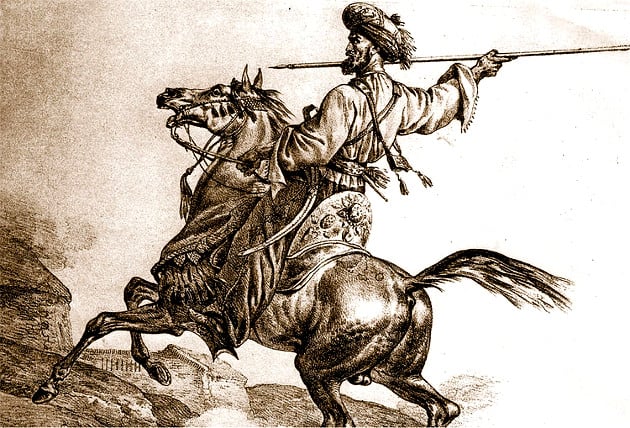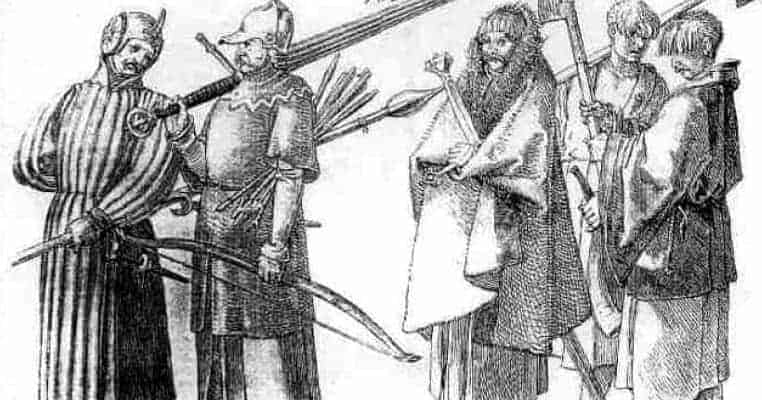Bearing in mind the vast scope of human warfare, choosing just ten of the greatest warrior cultures out of all of those that have punctuated history is certainly no easy task. The rise of a military culture depends on many things. Mostly it is a congruence of national mood, opportunity and leadership. The French would probably not rank among the greatest warrior nations in the world, certainly not in a modern context, but a combination of the French Revolution, a resurgence of national pride and the emergence of a great leader in the form of Napoleon Bonaparte set in motion one of the great military adventures of the age.
Another example, of course, is Alexander the Great, who combined great leadership with an extraordinary genius in military maneuver and tactics. Nothing like it has been recorded among the Macedonians before or since, so, in his case, as with Napoleon, the alchemy of great military achievement was momentary. A great military ‘society’, on the other hand, independent of individual ambition or leadership, is a different concept and is much more difficult to explain. A combination of long-held tradition with a sense of national superiority, and an aggressive, inbuilt character must all in some way contribute.
The ten warrior cultures that we have chosen for this list fall into the category of societies rather than national responses to a situation, or the inspiration of an individual leader, although in each case, great leaders have all played a part.

The Mamluks, a Slave Warrior Elite
The Mamluks as a warrior elite came to the attention of the western world when Napoleon encountered them during his ill-fated campaign to Egypt in 1798. The Egyptian Mamluk caste owed its origins to an Ottoman need for a professional, non-aligned military formation to hold firm Egyptian loyalty once it had been absorbed into the Ottoman Empire.
The word Mamluk simply derives from the Arabic word for ‘property’ or ‘ownership’, taken from the root term ‘Malaka’, meaning ‘to possess’. All of this implies quite simply that Mamluk warriors were slave soldiers, owned by a master. They were captured mainly from the Turkic or Caucasian regions and removed from their own ethnic backgrounds in order that they could serve in an environment uncomplicated by clan or family loyalties, and thus remain wholly obedient to their masters.
However, drawn from such diverse backgrounds, and thrown together as an armed force, it was somewhat inevitable that Mamluk would begin to develop a kinship and loyalty towards one another and the group. In time, this internal cohesion developed into an elite mentality, sowing aspirations that rose beyond the status of mere slaves. The Mamluk enter the historical record on or about 977 CE, and the final Mamluk dynasty was that in Iraq which disappeared as late as 1831. The most famous dynasty, however, was probably the Mamluk Sultanate of Egypt, which was founded in 1250, and was overturned by Ottoman intervention in 1517.
So much for the Mamluk, but what exactly qualifies them as a great military society? Historians generally explain this as a sense of common, martial identity forged from the isolation of their captive background. In other words, having been once founded as a subjugated military caste, it would be inevitable that a military identity would predominate as the caste began to acquire independent military power, and thereafter political ambition.
Again, the story of the Egyptian Mukluk Sultanate is perhaps the most quintessential. Mamluk soldiers were introduced to Egypt as a force loyal to the Ottoman Empire, but under their own authority, they imposed an independent sultanate within Egypt. They were not Egyptian, and they identified only as a ruling aristocracy, at which point their slave origins transmogrified from a badge of dishonor to one of exclusivity and distinction.
When Napoleon arrived in Egypt in the spring of 1798, Egypt was still informally governed by Mamluk Beys, and while the French were awestruck by lavish displays of military prowess, by the late 18th century, Mamluk military tactics were in fact long outdated, and the defenders of Egypt were therefore fairly easily defeated. Their traditional strength lay in light cavalry, and the sort of horsemanship common to the Caucasian races, but in the face of modern infantry tactics, they proved ultimately to be powerless. By the end, Mamluk’s military proficiency had become one of form over substance.

